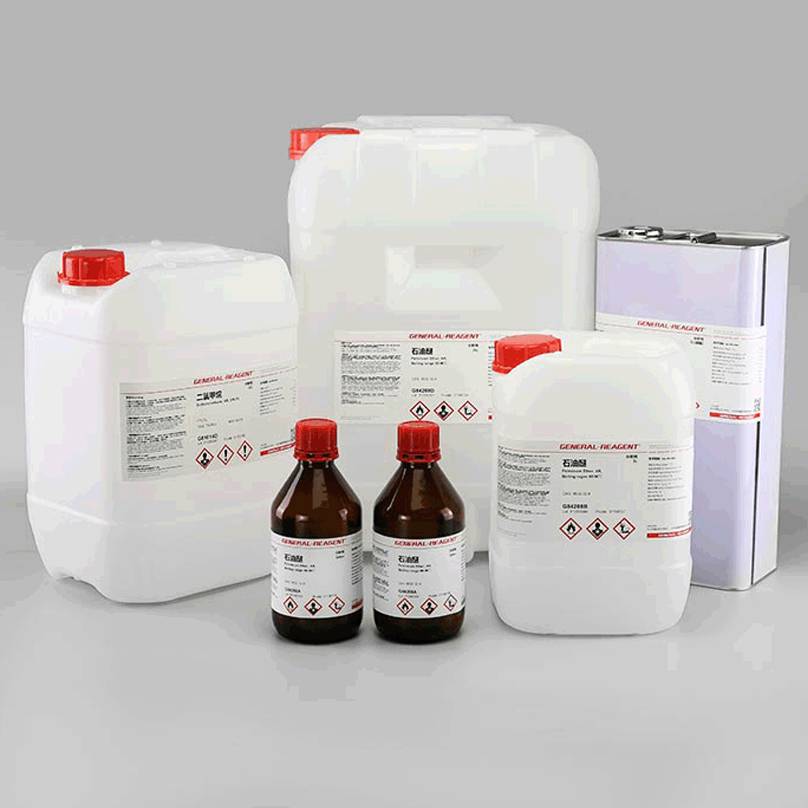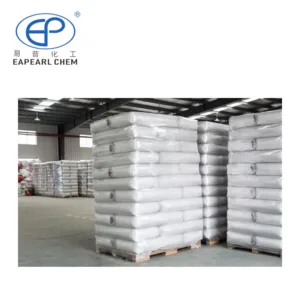High-Performance DBNPA Biocide – Fast-Acting, Broad-Spectrum, and Cost-Effective!
——Ensure effective microbial control with our high-purity 2,2-Dibromo-2-cyanoacetamide (DBNPA) – Ready for bulk supply with fast global shipping!
What is 2,2-Dibromo-2-cyanoacetamide (DBNPA)?
2,2-Dibromo-2-cyanoacetamide (DBNPA) is a fast-acting, non-oxidizing biocide widely used for microbial control in industrial applications. It is highly effective against bacteria, fungi, and algae, making it an essential component in water treatment and various manufacturing processes.
Key Features of DBNPA:
Fast microbial kill rate – Works quickly to eliminate contaminants
Broad-spectrum biocidal activity – Effective against bacteria, fungi, and algae
Non-oxidizing – Prevents equipment corrosion, unlike chlorine-based treatments
Biodegradable – Breaks down into non-toxic byproducts under environmental conditions
Versatile applications – Used in water treatment, oil & gas, pulp & paper, and industrial cooling systems


REQUEST A QUOTE FOR MORE DETAILS
Packing Instruction
| MA Packaging | Capacity | 20GP | 40GP |
| Bag | 25kgs/bag | total 800 bags, Net 20 Tons | total 1040 bags, Net26 Tons |
| Ton Bag | 1 tons/bag | total 20 Ton bags, Net 20 Tons | total 24-26 Ton bags, Net 24-26 Tons |
REQUEST A QUOTE FOR MORE DETAILS
Applications of 2,2-Dibromo-2-cyanoacetamide (DBNPA)
DBNPA is a highly effective, non-oxidizing biocide used across multiple industries to control microbial growth, prevent biofouling, and maintain industrial process efficiency. Below are the key applications of DBNPA:
1. Industrial Water Treatment
Application: Used in cooling towers, reverse osmosis (RO) systems, and industrial water circuits to prevent biofilm formation and bacterial growth.
Controls bacteria, fungi, and algae that cause system fouling
Prevents corrosion and blockages in pipelines and equipment
Enhances efficiency in closed-loop water systems


2. Oil & Gas Industry
Application: Added to drilling fluids, injection water, and hydraulic fracturing (fracking) systems to prevent microbial contamination.
Prevents microbial-induced corrosion (MIC) in pipelines and storage tanks.
Inhibits sulfate-reducing bacteria (SRB) that cause H₂S gas formation
Improves operational efficiency in oilfield production


3. Pulp & Paper Industry
Application: Used in paper mills and pulp processing to control bacterial slime formation.
Reduces production downtime by preventing microbial blockages
Enhances paper quality by eliminating microbial contamination
Maintains smooth operation of paper processing equipment
4. Paints, Coatings & Adhesives
Application: Added as a preservative in paints, coatings, adhesives, and sealants to prevent microbial degradation.
Prevents spoilage and microbial-induced discoloration
Extends shelf life and stability of water-based formulations
Maintains product performance and integrity




5. Industrial Cleaning Solutions
Application: Used in cleaning formulations and disinfectants for industrial environments.
Provides antimicrobial protection in industrial sanitizers
Eliminates bacterial contamination in storage tanks and pipelines
Enhances hygiene standards in manufacturing processes
6. Polymer & Textile Industries
Application: Used as an antimicrobial additive in polymer manufacturing and textile processing.
Prevents microbial deterioration of synthetic fibers and plastics
Improves product durability and hygiene properties
Reduces odor and bacterial growth in treated materials




7. Metalworking Fluids
Application: Added to lubricants and coolants in metalworking to prevent microbial growth.
Prevents biofilm buildup in cutting fluids
Maintains lubrication effectiveness and prolongs fluid life
Reduces microbial-induced odor and equipment damage
Why DBNPA is Preferred in These Applications?
Fast-acting – Quickly eliminates bacteria and biofilms
Non-oxidizing – Does not corrode metal equipment
Biodegradable – Breaks down into non-toxic byproducts
Versatile – Effective across various industries
DBNPA is a fast-acting, non-oxidizing biocide commonly used in industrial water treatment, pulp and paper manufacturing, and oilfield applications. To maintain its effectiveness and ensure safety, proper storage and handling procedures must be followed.
REQUEST A QUOTE FOR MORE DETAILS
Proper Storage and Handling of DBNPA (2,2-Dibromo-3-Nitrilopropionamide)
1. Storage Guidelines
Temperature Control: Store DBNPA in a cool, dry, and well-ventilated area at temperatures below 40°C (104°F). Avoid exposure to extreme heat, as it may degrade the product.
Container Integrity: Keep DBNPA in its original, tightly sealed container to prevent contamination and moisture absorption.
Avoid Sunlight & Moisture: Store away from direct sunlight, humidity, and water sources, as these conditions can affect its stability.
Separation from Incompatible Substances: Keep DBNPA away from strong oxidizers, reducing agents, and acids, as they may cause hazardous reactions.
Spill Containment: Store in a designated area with spill containment measures to prevent environmental contamination.
2. Handling Precautions
Use PPE (Personal Protective Equipment):
- Gloves:Chemical-resistant gloves (nitrile or neoprene).
- Eye Protection: Safety goggles or a face shield to prevent eye contact.
- Respiratory Protection: If handling DBNPA in areas with inadequate ventilation, use an appropriate respirator.
- Protective Clothing: Long-sleeved clothing or lab coats to minimize skin exposure.
Proper Ventilation: Work in a well-ventilated area or use local exhaust systems to avoid inhaling fumes.
Prevent Skin & Eye Contact: Avoid direct contact with DBNPA. In case of exposure, rinse immediately with plenty of water.
Minimize Dust & Vapor Generation: When handling DBNPA in powder or liquid form, take precautions to prevent aerosol formation.
3. Safe Handling During Use
Mixing Guidelines: When diluting or preparing formulations, always add DBNPA to water (never the reverse) to prevent splashing and exothermic reactions.
Avoid Cross-Contamination: Use dedicated tools and equipment to prevent contamination with other chemicals.
Follow Usage Recommendations: Always adhere to the manufacturer’s dosage and application guidelines for water treatment, industrial processes, or biocidal applications.
Emergency Response:
Spill Management: Absorb small spills with inert materials (e.g., sand or vermiculite) and dispose of according to local regulations.
First Aid: In case of ingestion, inhalation, or skin contact, seek medical attention immediately.
4. Transportation and Disposal
Regulatory Compliance: Follow local, national, and international regulations for transporting hazardous chemicals.
Labeling: Ensure all containers are properly labeled with hazard warnings.
Disposal Guidelines: Dispose of DBNPA and its residues in accordance with environmental regulations. Do not release into sewage systems or natural waterways.
By following these storage and handling procedures, you can maintain the stability and safety of DBNPA while ensuring its effectiveness in industrial applications. Always refer to the product’s Safety Data Sheet (SDS) for specific hazard information and regulatory requirements.
REQUEST A QUOTE FOR MORE DETAILS
Technical Data of 2,2-Dibromo-2-cyanoacetamide (DBNPA)
| Name | 2,2-Dibromo-2-cyanoacetamide |
| CAS NO. | 10222-01-2 |
| Molecular Weight | 241.869 |
| Density | 2.5±0.1 g/cm3 |
| Chemical Formula | C3H2Br2N2O |
| Boling Point | 221.5±40.0 °C at 760 mmHg |
| Melting Point | 122-125 °C(lit.) |
| Flash Point | 87.8±27.3 °C |
| PSA | 66.88 |
| LogP | 1.51 |
| Appearance | Colorless to yellow liquid has a moldy and spicy smell |
| Vapor Presure | 0.1±0.4 mmHg at 25°C |
| Refractive Index | 1.625 |
| Storage Condition | Sealed in a cool and dry place |
| HS | 2926909090 |
FAQs of 2,2-Dibromo-2-cyanoacetamide (DBNPA)
2,2-Dibromo-2-cyanoacetamide (DBNPA) is a fast-acting, non-oxidizing biocide widely used for microbial control in industrial applications. It is highly effective against bacteria, fungi, and algae, making it an essential component in water treatment and various manufacturing processes.
DBNPA is a highly effective, non-oxidizing biocide used across multiple industries to control microbial growth, prevent biofouling, and maintain industrial process efficiency.
Absolutely. We offer 100g-200g samples, with the client only covering shipping costs.
Standard lead times are approximately 2-4 weeks, varying based on order size and destination.
Our standard payment terms include a 30% advance and the balance against delivery, but terms can be negotiated for long-term partnerships.
Yes, we offer comprehensive after-sales support, addressing any post-purchase queries or concerns.
As a supplier, in order to provide you with an accurate quote for your product, please inform us of the quantity you require, the required purity specifications, any specific packaging needs, your shipping location, and whether your application requires any customization requirements or certifications.
How can we handle your order?


step 1
We will communicate with you within 24 hours after you send an enquiry.


step 2
If you need sample testing, we will send samples within 5 days,≤50kg, Express delivery recommended, usually called as DDU service; delivery time 5-7 days. Door to door service.


step 3
If you need bulk goods after the sample test is qualified, we will ship the goods to the port and keep the samples within 6 days after the order is confirmed. Sea shipping recommended, usually called as FOB, CFR, or CIF service.delivery time 10-45 days. Port to port service.


step 4
After waiting for you to receive the goods, we will arrange professional staff to pay a return visit within 7 days.




